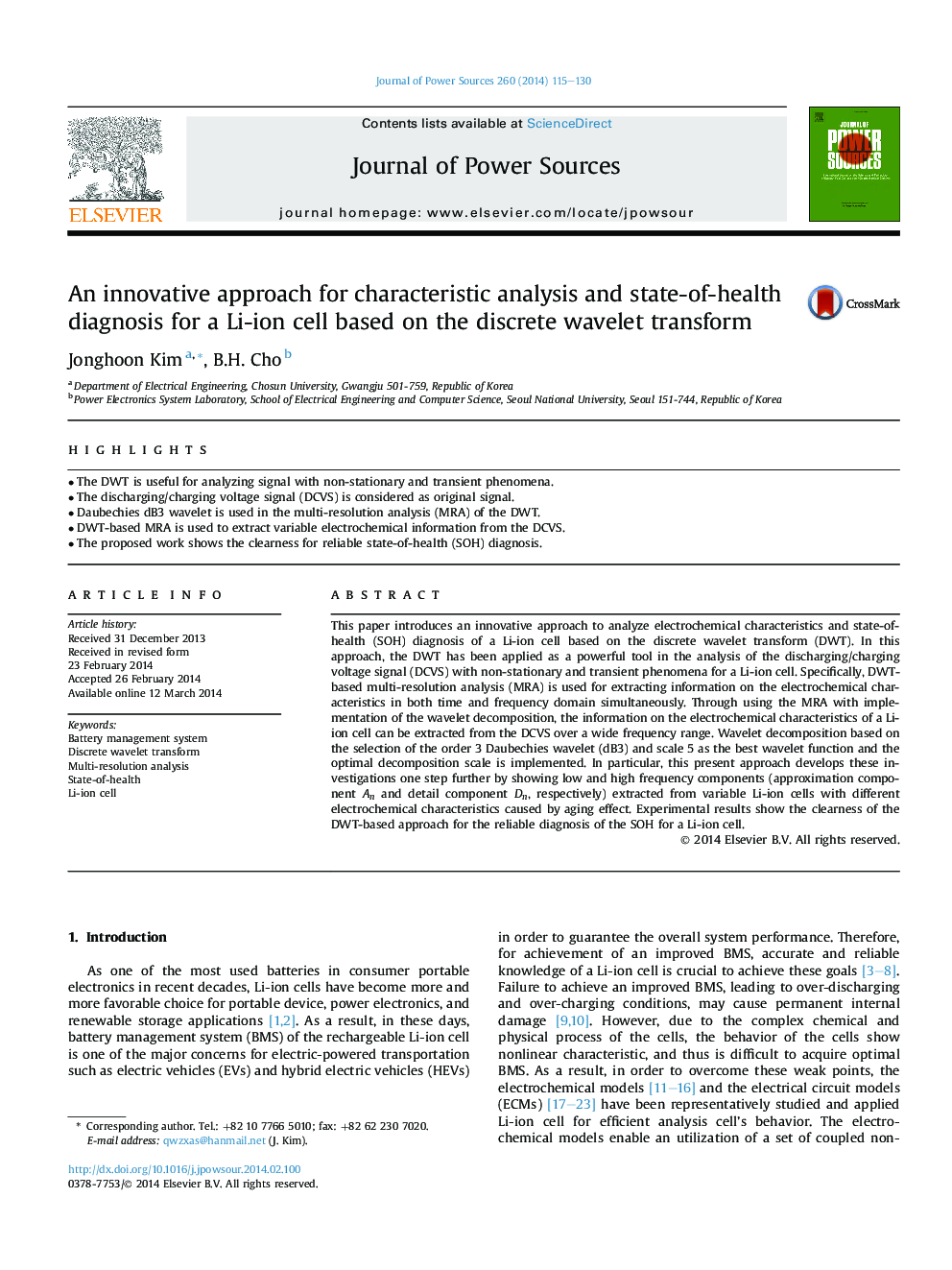| Article ID | Journal | Published Year | Pages | File Type |
|---|---|---|---|---|
| 1284149 | Journal of Power Sources | 2014 | 16 Pages |
•The DWT is useful for analyzing signal with non-stationary and transient phenomena.•The discharging/charging voltage signal (DCVS) is considered as original signal.•Daubechies dB3 wavelet is used in the multi-resolution analysis (MRA) of the DWT.•DWT-based MRA is used to extract variable electrochemical information from the DCVS.•The proposed work shows the clearness for reliable state-of-health (SOH) diagnosis.
This paper introduces an innovative approach to analyze electrochemical characteristics and state-of-health (SOH) diagnosis of a Li-ion cell based on the discrete wavelet transform (DWT). In this approach, the DWT has been applied as a powerful tool in the analysis of the discharging/charging voltage signal (DCVS) with non-stationary and transient phenomena for a Li-ion cell. Specifically, DWT-based multi-resolution analysis (MRA) is used for extracting information on the electrochemical characteristics in both time and frequency domain simultaneously. Through using the MRA with implementation of the wavelet decomposition, the information on the electrochemical characteristics of a Li-ion cell can be extracted from the DCVS over a wide frequency range. Wavelet decomposition based on the selection of the order 3 Daubechies wavelet (dB3) and scale 5 as the best wavelet function and the optimal decomposition scale is implemented. In particular, this present approach develops these investigations one step further by showing low and high frequency components (approximation component An and detail component Dn, respectively) extracted from variable Li-ion cells with different electrochemical characteristics caused by aging effect. Experimental results show the clearness of the DWT-based approach for the reliable diagnosis of the SOH for a Li-ion cell.
